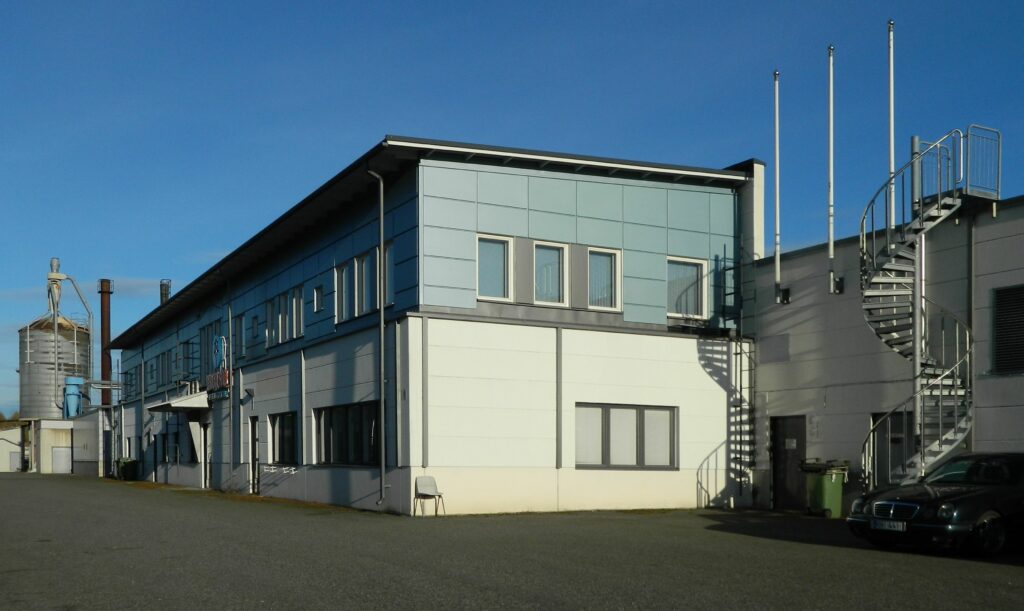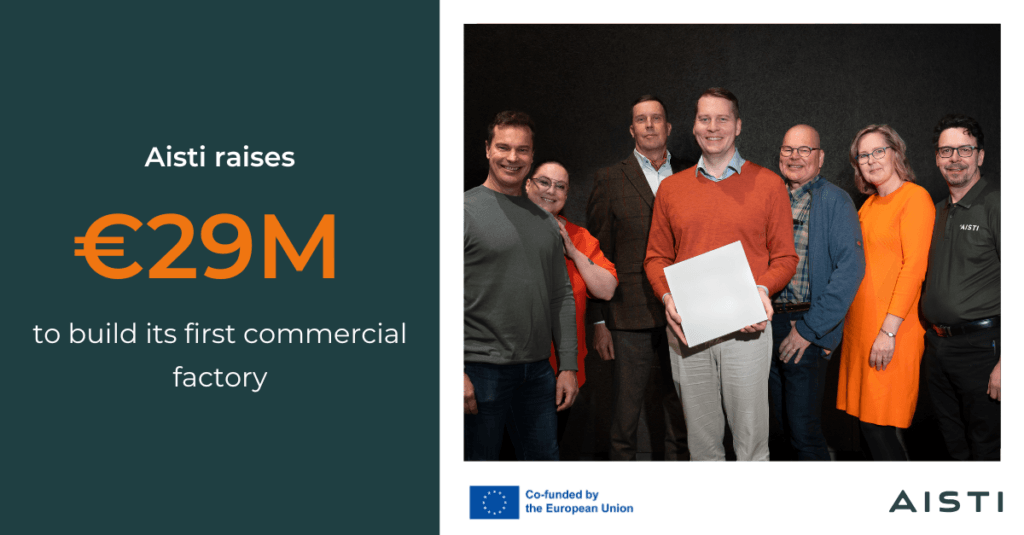
Five solutions for a carbon-conscious product supply chain
Written by Mikko Paananen
The global construction industry is experiencing an unprecedented boom, driven by rapid urbanization rates and soaring demand for building materials. To fulfill the increasing need for urban spaces, an area the size of New York City will be built every week for the next four decades.
From an acoustic market perspective, the demand for acoustic tiles alone is estimated to reach a market value of 17 billion USD by 2026.
More ceilings to cover means more acoustic tiles to deliver.
While this is excellent news for the industry’s growth and profits, it puts tremendous pressure on suppliers like us to find responsible and carbon-conscious solutions to deliver product shipments while reducing our products’ carbon footprint.
At Aisti, we strive to maintain a negative carbon footprint for our Aisti® Teno acoustic tiles throughout their life cycle – from sourcing raw materials to recycling.
Therefore, we carefully consider how we deliver our products to our customers to ensure that we continue to uphold our commitment to sustainability.
“Every step our tiles take, from tree to customer, counts in our commitment to lead the green transition in the building sector,” Mikko.
The impact of building material transportation on climate change
Emissions during each stage of the material lifecycle
Transportation plays a pivotal role, carrying not just products but also significant environmental implications. The impact of transport on climate change is a crucial concern in the construction industry. It starts with shipping raw materials, delivering finished products, and recycling them after use in buildings.

The supply chain is fragmented due to multiple players involved.
Mckinsey & Co. highlighted that the building sector’s fragmentation of transportation and logistics is one major contributor to these challenges.
The article explains the fragmented ecosystem and involves multiple stakeholders, including planning companies, contractors, subcontractors, and material suppliers.

A low level of collaboration across the value chain creates a siloed ecosystem of supply in the industry in which each stakeholder manages their own risk and costs.
This fragmentation increases the environmental impact of product delivery and slows the turnaround time of projects, necessitating a streamlined process that prioritizes efficiency and sustainability.
Five solutions to optimize acoustic tile transportation:
Therefore, optimizing transportation networks reduces carbon emissions and enhances efficiency, cost-effectiveness, and overall supply chain resilience.
To ensure a responsible delivery of our acoustic products to valued customers, we have identified five essential building blocks for a “Net-Zero” acoustic tiles transportation:
01 Sourcing responsibly from nature
Encourage biobased raw materials by partnering with suppliers who prioritize sustainability.
Choosing sustainable wood fiber and other innovative recycled materials reduces deforestation, habitat destruction, and carbon emissions.
02 Investing in efficient and carbon-conscious manufacturing
Pilot new technologies and automation at the manufacturing phase to ensure energy-efficient manufacturing and local production of acoustic tiles.
Material decarbonization reduces emissions in building material production and lowers emissions for new buildings.
Our commercial plant in Finland guarantees delivery of our tiles to core markets within 48 hours of ordering. The plant’s centralized location gives Aisti a head start with route optimization.
03 Encouraging climate-positive collaborations throughout the supply chain
Foster collaboration among stakeholders to consolidate acoustic tiles transportation, reduce empty miles, and minimize the number of vehicles on the road.
Suppliers use real-time data to optimize deliveries and reduce empty miles.
Also, there are plenty of cutting-edge last-mile delivery solutions, including electric vehicles, that can offer greater flexibility with lower carbon emissions.
04 Developing a digital product passport
Develop a digital bank detailing the characteristics and value of the building material for recovery, reuse, and recycling to foster transparency and facilitate comparison.
WGBC suggests that recording information in digital databases can transform built assets into material banks for future use.
The passport can showcase the emissions and values of each material at the end of a building’s life, promoting a circular economy and sustainable transportation.
05 Optimizing routes and transport practices
Availability is paramount to our customers, and we will actively contribute to mitigating Teno’s climate impact by optimizing delivery routes.
Utilize advanced logistics software and data analytics to optimize acoustic tiles transportation routes by considering distance, traffic patterns, and delivery schedules.
As a result, optimized transportation can reduce fuel consumption, minimize emissions, and improve overall efficiency.
Final thoughts on responsible product transportation
The journey towards carbon-conscious transportation of building materials, particularly acoustic tiles, holds immense potential for fostering a sustainable future.
By streamlining transportation networks, promoting stakeholder collaboration, and implementing sustainable practices, we can significantly mitigate the environmental impact of the sector’s supply chain ecosystem.
“We are committed to building a sustainable distribution network in our key markets fostered through collaborations with logistics partners who share our commitment to the environment,” concludes Mikko
-end-
The article was updated on 11.09.2023


